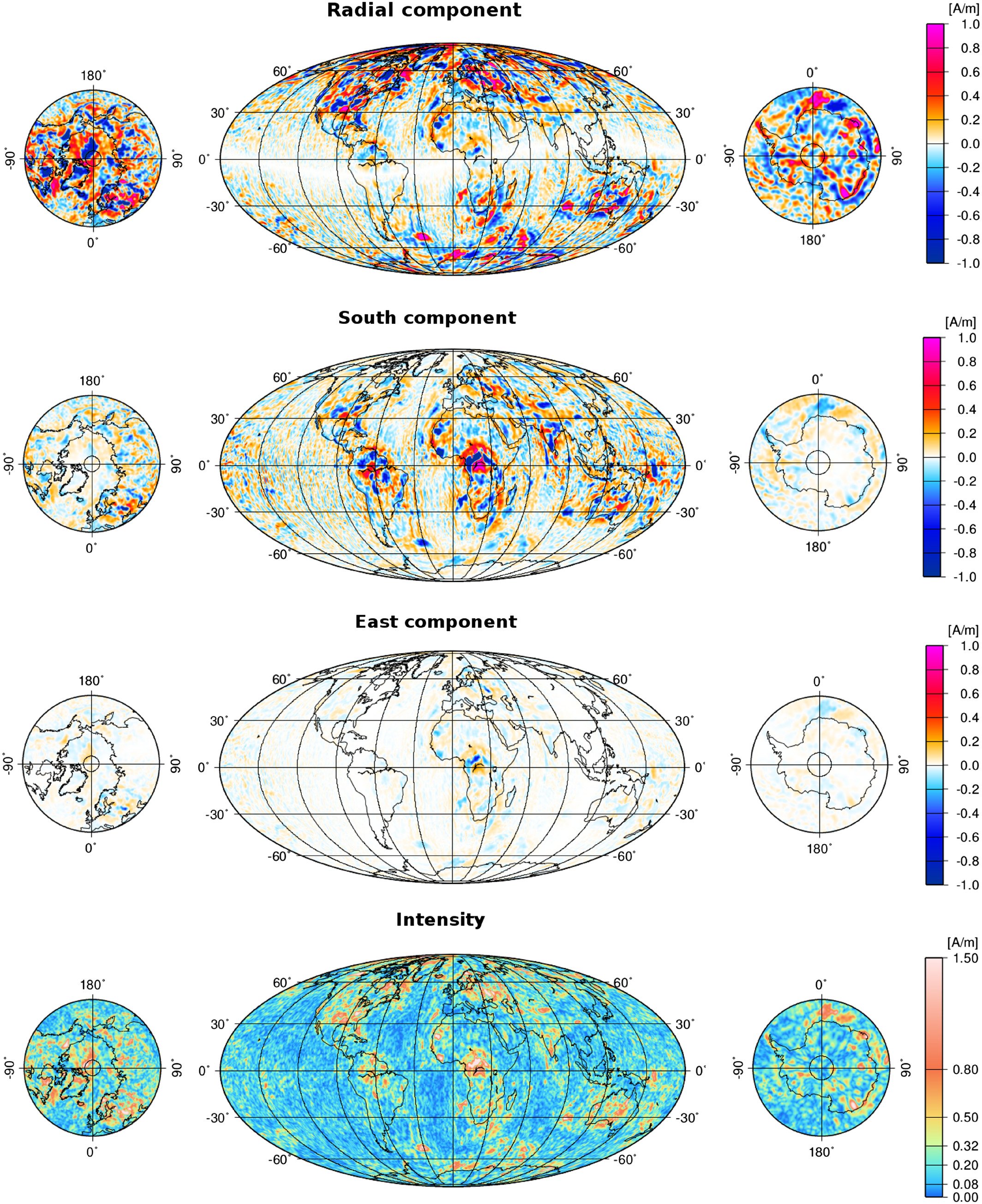Earth’s crustal magnetization has two components: the so-called induced magnetization and the so-called remanent magnetization. In the presence of Earth’s core magnetic field, the magnetic minerals in the rocks align their magnetic moment such that on average the rocks get magnetized along the direction of Earth’s core magnetic field. This part of Earth’s magnetization is known as induced magnetization. If the core magnetic field would cease to exist, this magnetization would cease as well. Ferromagnetic minerals, like iron, and ferrimagnetic minerals like magnetite, have the additional property of being able to acquire magnetization that is preserved even after the magnetizing field has ceased, over time periods that can extend up to billions of years. This magnetization is known as remanent magnetization and is essentially magnetization frozen in time: what gave rise to it is a snapshot of the past magnetic field. My work on the terrestrial magnetization has focused by now on the induced part (see ‘Mars’ and ‘Moon’ for my work on extraterrestrial remanent magnetization).
The reason for which it is not obvious to retrieve the magnetization from magnetic field measurements is shown in this figure (from Vervelidou et al., 2017, GJI, Figure 3):
The magnetization is like a 3D structure (the cylinder) but the magnetic field measurements allow us access only to the so-called visible magnetization, a projection on a 2D surface (the blue ellipse). In this study, I showed how in the case of induced magnetization, this 2D projection is linked to the orthogonal 2D projection (the red square), and therefore how we can reconstruct a 3D image of the induced magnetization: Vervelidou, F. and Lesur, V. (2018): Unveiling Earth’s hidden magnetization. Geophysical Research Letters, 45(22), pp. 12-283, doi: 10.1029/2018GL079876.

